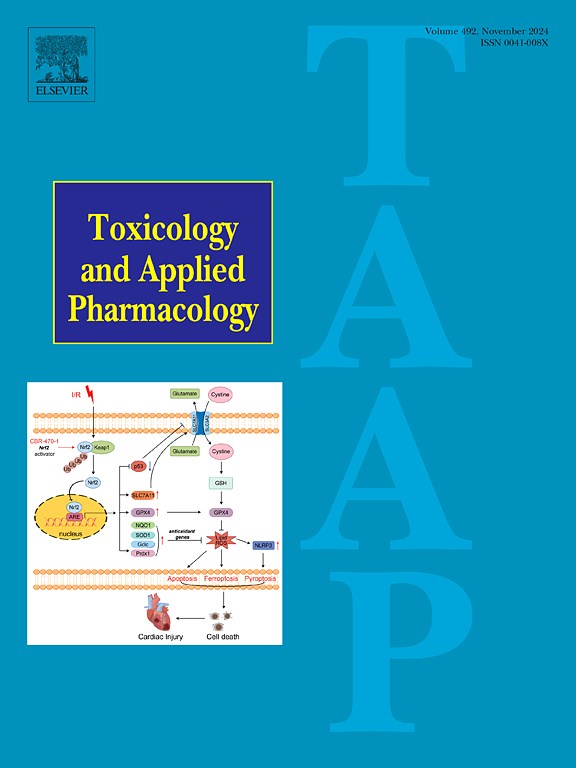Honokiol attenuates oxidative stress and vascular calcification via the upregulation of heme oxygenase-1 in chronic kidney disease
IF 3.3
3区 医学
Q2 PHARMACOLOGY & PHARMACY
引用次数: 0
Abstract
Vascular calcification (VC) is a common complication of chronic kidney disease (CKD), with oxidative stress identified as a key contributor to VC progression. Honokiol (HKL), a biphenolic compound derived from plants, has been found to be effective in treating various models of cardiovascular disease through the mitigation of oxidative stress. However, its effects on VC remain unexplored. To elucidate the effects of HKL on VC, a CKD rat model, a vitamin D3-overload-induced mouse model of vascular calcification, and a high-phosphate-induced human vascular smooth muscle cell (VSMC) calcification model were established. Calcification levels were assessed using alizarin red staining, calcium quantification, and western blotting of osteogenic markers. Oxidative stress was assessed by measuring reactive oxygen species. Furthermore, transcriptome sequencing was employed to identify molecules and pathways affected by HKL. HKL was found to significantly reduce calcification in both in vivo and in vitro models. It also mitigated oxidative stress induced by high phosphate in human VSMCs. Mechanistically, HKL upregulated heme oxygenase-1 (HMOX-1), thereby inhibiting oxidative stress and reducing calcification. Pharmacological inhibition of HMOX-1 counteracted the protective effect of HKL against vascular calcification. In summary, the findings suggest that HKL ameliorates VC by upregulating HMOX-1 and decreasing oxidative stress.

在慢性肾脏疾病中,檀香醇通过血红素氧化酶-1的上调来减轻氧化应激和血管钙化。
血管钙化(VC)是慢性肾脏病(CKD)的常见并发症,氧化应激被认为是导致血管钙化进展的关键因素。Honokiol(HKL)是一种从植物中提取的双酚化合物,已被发现可通过减轻氧化应激有效治疗各种心血管疾病。然而,它对 VC 的影响仍有待探索。为了阐明香港六合彩资料大全对血管钙化的影响,研究人员建立了慢性肾功能衰竭大鼠模型、维生素 D3 超载诱导的小鼠血管钙化模型和高磷酸盐诱导的人血管平滑肌细胞(VSMC)钙化模型。通过茜素红染色、钙定量和成骨标志物的 Western 印迹来评估钙化水平。通过测量活性氧来评估氧化应激。此外,还采用转录组测序来确定受香港六合彩资料大全影响的分子和通路。研究发现,香港六合彩资料大全在体内和体外模型中都能明显减少钙化。它还减轻了高磷酸盐在人血管内皮细胞中诱导的氧化应激。从机理上讲,香港六合彩资料大全能上调血红素加氧酶-1(HMOX-1),从而抑制氧化应激并减少钙化。药理抑制 HMOX-1 可抵消 HKL 对血管钙化的保护作用。总之,研究结果表明,香港六合彩资料大全通过上调 HMOX-1 和降低氧化应激改善了血管钙化。
本文章由计算机程序翻译,如有差异,请以英文原文为准。
求助全文
约1分钟内获得全文
求助全文
来源期刊
CiteScore
6.80
自引率
2.60%
发文量
309
审稿时长
32 days
期刊介绍:
Toxicology and Applied Pharmacology publishes original scientific research of relevance to animals or humans pertaining to the action of chemicals, drugs, or chemically-defined natural products.
Regular articles address mechanistic approaches to physiological, pharmacologic, biochemical, cellular, or molecular understanding of toxicologic/pathologic lesions and to methods used to describe these responses. Safety Science articles address outstanding state-of-the-art preclinical and human translational characterization of drug and chemical safety employing cutting-edge science. Highly significant Regulatory Safety Science articles will also be considered in this category. Papers concerned with alternatives to the use of experimental animals are encouraged.
Short articles report on high impact studies of broad interest to readers of TAAP that would benefit from rapid publication. These articles should contain no more than a combined total of four figures and tables. Authors should include in their cover letter the justification for consideration of their manuscript as a short article.

 求助内容:
求助内容: 应助结果提醒方式:
应助结果提醒方式:


